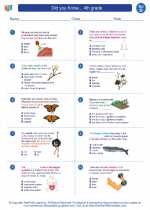What is Territorial Behavior?
Territorial behavior is the natural instinct of an animal to protect and defend a specific area or territory from other members of the same species or even different species. This behavior is driven by the need to secure vital resources such as food, mates, nesting sites, and shelter.
Types of Territorial Behavior
There are various types of territorial behavior, including:
- Defensive Aggression: Animals may exhibit aggressive behaviors such as vocalizations, threats, and physical combat to defend their territory.
- Marking Behavior: Many animals use scent marking or visual markers to demarcate their territory and communicate ownership to potential intruders.
- Patrolling and Boundary Maintenance: Some animals actively patrol their territories and maintain boundaries to deter intruders.
- Availability of Resources: The scarcity of resources like food, water, and suitable habitats can intensify territorial behaviors.
- Reproductive Needs: Mating opportunities and access to mates can drive animals to defend territories during breeding seasons.
- Social Structure: Hierarchical structures within a species can dictate territorial dominance and the allocation of territories among individuals.
- Birds: Many bird species defend nesting territories and display elaborate courtship rituals to attract mates.
- Wolves: Wolf packs establish and defend expansive territories to secure hunting grounds and den sites.
- Bees: Honeybees vigorously defend their hive and foraging areas from intruding insects and predators.
- Resource Access: Successful defense of a territory ensures access to vital resources, enhancing an animal's chances of survival and reproductive success.
- Conflict and Competition: Territorial disputes can lead to conflicts between individuals, influencing population dynamics and social structures.
- Communication and Signaling: Territorial behavior serves as a form of communication, conveying information about an individual's status and fitness to others in the population. .
Factors Influencing Territorial Behavior
Several factors can influence territorial behavior in animals:
Examples of Territorial Behavior
Territorial behavior is widespread in the animal kingdom. Here are some examples:
Consequences of Territorial Behavior
Territorial behavior can have several consequences for individuals and populations:
◂Science Worksheets and Study Guides Fourth Grade. Did you Know... 4th grade
Study Guide Did you Know... 4th grade
Did you Know... 4th grade  Worksheet/Answer key
Worksheet/Answer key Did you Know... 4th grade
Did you Know... 4th grade  Worksheet/Answer key
Worksheet/Answer key Did you Know... 4th grade
Did you Know... 4th grade  Worksheet/Answer key
Worksheet/Answer key Did you Know... 4th grade
Did you Know... 4th grade 

 Worksheet/Answer key
Worksheet/Answer key
 Worksheet/Answer key
Worksheet/Answer key
 Worksheet/Answer key
Worksheet/Answer key

The resources above cover the following skills:
Core Ideas for Knowing Science
Life Science
Organisms are organized on a cellular basis and have a finite life span.